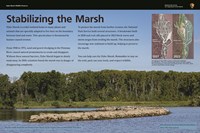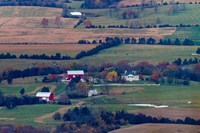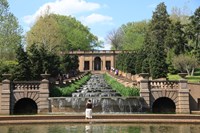- George Washington Memorial Parkway (179)
- Rock Creek Park (107)
- Chesapeake & Ohio Canal National Historical Park (88)
- Prince William Forest Park (83)
- Harpers Ferry National Historical Park (82)
- Manassas National Battlefield Park (79)
- Antietam National Battlefield (78)
- National Capital Parks-East (78)
- George Washington Birthplace National Monument (71)
- Show More ...
- Harpers Ferry Center (9)
- Northeast Coastal and Barrier Inventory & Monitoring Network (9)
- Urban Ecology Research Learning Alliance (9)
- Inventory and Monitoring Division (8)
- Geologic Resources Division (7)
- National Capital Inventory & Monitoring Network (7)
- National Historic Landmarks Program (7)
- Archeology Program (6)
- Natural Resource Stewardship and Science Directorate (6)
- Show More ...
Showing 727 results for GWMP ...
Cherry Blossom Groves
Independence Hall
- Type: Place
Independence Hall is the birthplace of the United States. In 1776, the Second Continental Congress signed the Declaration of Independence here. Eleven years later, in the same room, delegates to the Constitutional Convention created and signed an enduring framework of government - the United States Constitution.
Picnicking at George Washington Birthplace National Monument
- Type: Place
Just a short drive from many Mid-Atlantic cities, the Northern Neck National Heritage Area offers a journey back in time. Whether for a day, weekend, or week, you’ll find endless opportunities to explore history, enjoy coastal charm, and experience natural beauty. From historic sites to scenic byways, there’s always something new to discover in this unique corner of Virginia.
Bet: Freedom Seeker
Edmund Jackson
- Type: Person
Boston merchant and abolitionist Edmund Jackson served on the 1850 Boston Vigilance Committee.
Eliphalet W. Jackson
- Type: Person
Clergyman and merchant Eliphalet W. Jackson participated in the abolition and temperance movements and served on the 1850 Boston Vigilance Committee.
Information Panel: Stabilizing the Marsh
Signal Knob
Meridian Hill Park
- Type: Person
Before Shirley Graham married W.E.B. Du Bois in 1951, she had earned a national reputation as a playwright, composer, conductor, director, and author. Born to a A.M.E. minister and a European mother, Graham was raised to appreciate Black culture and music. From a young age, her parents instilled in her the importance of social justice and the uplift of the Black Community. For her lifelong dedication, we honor her as an ancestor.
Pope's Creek Raid - June 11-21, 1864
- Type: Person
Banastre Tarleton, a British army officer, famously commanded the British Legion, a provincial regiment composed of loyalist infantry and dragoons, in the southern theater under Lord Cornwallis during the Revolution. Feared for his ruthlessness by the patriots, his early successes in the field earned him notoriety. Defeated at the Battle of Cowpens by Brig. Gen. Daniel Morgan, Tarleton's favor with Cornwallis declined. Tarleton was present at the surrender at Yorktown.
- Type: Person
Charles Cornwallis, 1st Marquess Cornwallis and 2nd Earl Cornwallis, served as a British general during the American Revolution and notably surrendered his army to General Washington's Continental army and the allied French forces at Yorktown, Virginia in October 1781. This surrender effectively ended hostilities between British and American forces and led to peace negotiations, ending the war and recognizing American independence. Cornwallis later governed in India.
Information Panel: Aftermath
- Type: Person
Benjamin Lincoln, a major general of the Continental Army, was present at pivotal moments in the American Revolution. He oversaw the Continental Army's largest defeat when he surrendered 5,000 soldiers to the British in Charleston, South Carolina in May 1780. After being exchanged, he returned to the army and was present at the allied Franco-American victory at the Siege of Yorktown. He accepted the surrender of General Charles O'Hara's sword.
- Type: Person
Charles Lee, former British Army officer, became the second highest ranking general of the Continental Army during the American Revolution. On June 28, 1776 he oversaw the victory at the Battle of Sullivan's Island in Charleston, SC. Two years later, his retreat on the field at the Battle of Monmouth Courthouse would result in his court martial and the end of his military career. Learn more about this controversial figure here.


















